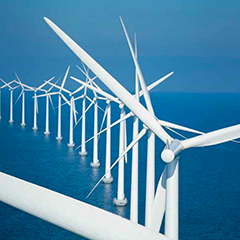Reducing the cost of wind energy is the common goal, but there any many ways to get there, argues Peter Hansen of LM Wind Power. We’re delighted to welcome him and the company to the magazine for their first technical feature…
Wind power has moved significantly closer to grid parity over recent years. In fact, an onshore wind turbine can produce a kilowatt hour of energy at almost the same price as fossil fuels. However, if wind power is to attract new investment and expand its share of the global energy market, a further decrease in the cost of energy is required.
Each component and process in the creation of a wind turbine can contribute to energy cost reduction. And, as approximately 20% of total turbine costs, blades are a strategic component.
For Peter Hansen, Senior Project Manager of Technical Business Development, blade design is all about investment and making the right compromises to achieve optimal performance. LM Wind Power’s design engineers continually ask the question: “How can we reduce the cost of energy through blade technology?”
The answer? Well, that lies somewhere between three distinct, yet interrelated, avenues: (1) Increase end yield without increasing cost, (2) Reduce turbine cost, and (3) Minimise loading on the turbine.
1. Increase end yield without increasing cost
The concept is simple: the greater the annual energy production (AEP) of a blade, the greater the return on investment. Though there may be many options for increasing end yield through blade technology, these innovations mean nothing if they aren’t cost effective. As Hansen says, “If you increase end yield more than cost, then you are getting it right.”
And in terms of increasing end yield through blade design, bigger is better.
In 2011, LM Wind Power produced the world’s largest blade at the time, at an impressive 73.5 meters. Designed to fit Alstom’s 6MW Haliade turbine, the 73.5 illustrates LM Wind Power’s commitment to developing ever more reliable and highly cost efficient multi-megawatt blades.
Producing on this scale requires the optimal compromise between structural characteristics and aerodynamics. With the RotorOpt optimisation tool, LM Wind Power engineers can design the longest possible blade for a given turbine, under the load constraints defined by the turbine construction.



























